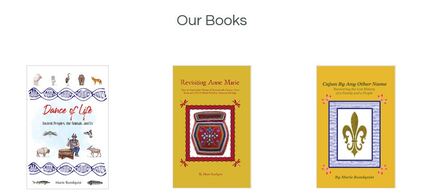|
Non-invasive, e-DNA (environmental DNA) collection techniques, as applied to the study of endangered marine animals, apply (surprisingly!) to the collection and analysis of human DNA, according to latest, published research From a recent article published in Nature Ecology & Evolution, "Inadvertent human genomic bycatch and intentional capture raise beneficial applications and ethical concerns with environmental DNA," we have the following observation: "...deep-sequencing-based eDNA approaches capture genomic information from humans (Homo sapiens) just as readily as that from the intended target species. We term this phenomenon human genetic bycatch (HGB). Additionally, high-quality human eDNA could be intentionally recovered from environmental substrates (water, sand and air), holding promise for beneficial medical, forensic and environmental applications." Researchers also noted: "These samples had been collected primarily for the detection of non-human species, marine turtles, animal pathogens and metagenomics8,17. With no human enrichment prior to shotgun sequencing and with sampling having been conducted in areas of relatively low human habitation densities, we nevertheless inadvertently captured a substantial amount of human genomic data." Used in the article is the thought-provoking phrase "human genetic bycatch." The term "bycatch" is used to describe what happens when one animal is sought but another ends up in the trap, or net, and certainly applies to what apparently happened when human DNA was discovered during the collection of marine e-DNA... from the environment! Citations and References:
Note from DNA Genealogy History: The use of "e-DNA" (or environmental DNA, as a non-invasive method for collection and research of animal DNA was also researched in writing the book Dance of Life, published in 2022, and the book includes many examples of why this technique is so valuable to animal and marine biologists in their research of endangered species.
I've included many generations of grandmothers, and mitochondrial DNA haplogroups, in my Mother's Day wish this year.
Happy Mother's Day to all mothers from our near and distant past, still alive in our hearts, those we have around us now, and those who are yet to be! I think also about the many generations of grandmothers I have, going back thousands of years, found only by tracing my mitochondrial DNA, and wish them all a happy belated! -- from Marie Rundquist, A2f1a Key findings: "The Asian ancestry of Native Americans is more complicated than previously indicated," says first author Yu-Chun Li, a molecular anthropologist at the Chinese Academy of Sciences. "In addition to previously described ancestral sources in Siberia, Australo-Melanesia, and Southeast Asia, we show that northern coastal China also contributed to the gene pool of Native Americans." "Though the study focused on mitochondrial DNA, complementary evidence from Y chromosomal DNA suggests that male ancestors of Native Americans also lived in northern China at around the same time as these female ancestors." The "Travel by Ancestry" blog watches this space as data continues to come in about earliest origins: https://www.familyheritageresearchcommunity.org/delmarva-dna Open Access References:
From the original research published in Nature: "Here we report the development of a non-destructive method for the gradual release of DNA trapped in ancient bone and tooth artefacts. Application of the method to an Upper Palaeolithic deer tooth pendant from Denisova Cave, Russia, resulted in the recovery of ancient human and deer mitochondrial genomes, which allowed us to estimate the age of the pendant at approximately 19,000–25,000 years. Nuclear DNA analysis identifies the presumed maker or wearer of the pendant as a female individual with strong genetic affinities to a group of Ancient North Eurasian individuals who lived around the same time but were previously found only further east in Siberia. " Reference (Open Access): Essel, E., Zavala, E.I., Schulz-Kornas, E. et al. Ancient human DNA recovered from a Palaeolithic pendant. Nature (2023). https://www.nature.com/articles/s41586-023-06035-2 Find out about how we may look to the animals for knowledge of ourselves and to guide us in our research of our earliest connections in Dance of Life.
|
Archives
June 2025
Categories
All
|
DNA-Genealogy-History.com Site Index:
Copyright 2025 Marie Rundquist., DNA Genealogy History, LLC
DNA Genealogy History, LLC is a registered S Corporation with the State of Virginia and the Federal Government since 2017, is a retailer and distributor of books and digital publications, and is certified, authorized and empowered to collect Sales and Use Tax for the Commonwealth of Virginia.
E-Mail Your Comments to [email protected]
This website is not intended for users located within the European Economic Area.
DNA Genealogy History, LLC is a registered S Corporation with the State of Virginia and the Federal Government since 2017, is a retailer and distributor of books and digital publications, and is certified, authorized and empowered to collect Sales and Use Tax for the Commonwealth of Virginia.
E-Mail Your Comments to [email protected]
This website is not intended for users located within the European Economic Area.





 RSS Feed
RSS Feed
